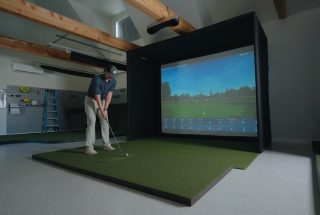January weather impact was favorable with Golf Playable Hours (GPH) up 4% compared to year ago. This sets the opening standard for the Year-to-Date (Ytd) weather impact at +4% vs. year ago which is a positive start. YtD regional breadth was dead even at 1:1 with 9 regions having favorable weather compared to 9 regions with unfavorable weather (1 in the neutral zone and the remaining 26 regions out of play). Completing the trifecta, the weekday vs. weekend weather impact was also favorable with weekends registering +14% while weekdays were -1% vs. year ago.
Looking back on December rounds demand as reported by Golf Datatech/NGF to calculate % Utilization, the Utilization Rate increased a whopping 12 points to 65% (comprised of a 1% decrease in Rounds Played against an 18% decrease in Capacity Rounds). For the YtD period (full year), the Utilization Rate climbed slightly to 53% and finished the year down 1/2 point compared to the 2009 year end benchmark rate of 53%. Market utilization “winners” for the year were Arkansas, Myrtle Beach and Raleigh/Greensboro all posting gains of better than 4 points while the “biggest losers” were Seattle, Minneapolis and San Francisco all shedding more than 4 points.
Jim Koppenhaver comments, “The January weather is a positive start to a new year which should produce an increase in rounds vs. January 2010. That said, I completely missed the call on December rounds which were essentially flat against a fairly significant drop on GPH. This was the first time since we started tracking weather impact that rounds played have diverged by double-digits vs. the weather impact which means either golfers played in marginal weather or we or Datatach/NGF made a math error in calculating our components. We’ll go back and take a look but, for now, it goes in the books as a solid month for increasing course efficiency by holding rounds against significantly unfavorable weather. In the January results, I also anticipate that the rounds increase will be slightly muted as some geographies such as Orlando had “playable” weather but, by historical season standards, the temps were 10+ degrees below normal. In other words, all of us Chicago golfers will still play at 60 degrees in Orlando in January whereas the locals probably did not.”
On the facility revenue side via the December PGA PerformanceTrak numbers, the YtD numbers held steady to -3% for the All Facility Greens Fee Revenue Median comprised of a 2% decline in rounds (volume) and a 1% decline in rate. There remain curiosities in the projections being produced as they report the median facility rounds for the year came in at 24.3K (projected across 15.9K facilities only comes up to 387M rounds vs. Datatech/NGF and Pellucid consistent projections over the past decade of between 475-500M?)
A broader and more detailed scorecard of the monthly key industry metrics can be found in Pellucid’s new digital magazine, The Pellucid Perspective. To register to get the current and future editions, go to http://www.pellucidcorp.com/utilities/guest.html and select any of the existing services for information.
Parties interested in understanding and quantifying what part of rounds and revenue performance is due to ”controllable” vs. ”uncontrollable” factors (i.e. course owners, lenders, buyers, sellers, equipment manufacturers, retailers and service providers) can find more information on Pellucid’s weather capabilities at www.pellucidcorp.com.
For more specific information on how Pellucid’s Weather Impact capabilities answer key business performance questions, including a sample report and pricing, contact Jim Koppenhaver at jimk@pellucidcorp.com.
Contact:
Jim Koppenhaver, President, Pellucid Corp.
jimk@pellucidcorp.com
www.pellucidcorp.com



